Local News
Jewish Heritage Centre to present talk on Western Canadian Jewish anarchists, including Feivel Simkin
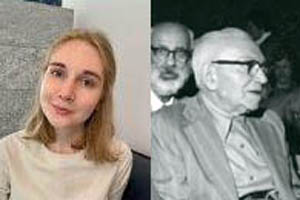
By BERNIE BELLAN Maria Tarasova-Chomard is a young (24 year old) student, originally from Russia, now living in Paris, who will be presenting a talk on Western Canadian Jewish anarchists for the Jewish Heritage Centre of Western Canada on Sunday, October 3rd.
In the September 1st article I noted that I would have more about my interview with Maria in our September 15 issue, including some detailed information about certain Jewish individuals who were leading anarchists in Winnipeg in the early part of the 20th century.
I should also note that Maria is the first student winner of the Switzer-Cooperstock prize, given for an original essay on a subject relating to Western Canadian Jewish history. The Switzer-Cooperstock prize is awarded biennially, with the new student prize awarded in alternate years.
Returning to my conversation with Maria, which occurred over Zoom on August 24 while Maria was in her Paris home, I asked her “whether there were any names of well-known Jewish anarchists from Western Canada that” she could “throw out for the benefit of readers”?
Maria responded: “Yes, there were the Prasow brothers – Zalman and Israel – they were the leaders of the movement actually. Then there was Feivel (Frank) Simkin.”
Saying the name “Feivel Simkin” certainly triggered a greater interest on my part, since the Simkin name is so well known within the Jewish community. While I don’t want to preempt anything Maria might have to say during her talk on October 3rd, I’m sure reading the name “Simkin”, followed by the word “anarchist” might come as a bit of a surprise to at least some readers.
Following my conversation with Maria, I sent an email to Stan Carbone, curator of the Jewish Heritage Centre, in which I noted that Maria had said that Feivel Simkin was a leading anarchist in Winnipeg – which came as a surprise to me. I had known that Feivel Simkin had been the publisher of the Israelite Press, but beyond that, I knew nothing about the man.
So, Stan sent me a transcript of an interview that Roz Usiskin had conducted with Feivel Simkin in 1977, in which he tells his life story – also how he defines “anarchism”. Here is what he said at one point in the interview: “They believed that you should educate yourself, and then you didn’t need government to look after you.”
I said to Maria that I’d always been a little unclear how to define “anarchist”. I said to her that I thought the anarchist movement had begun in the late 19th century, but she said it actually began earlier than that – “in the beginning of the 19th century”, but the “period of the flourishing of the movement was really toward the end of the century”.
I asked Maria to give me “a Cole’s Notes definition of ‘anarchism’”.
Maria answered: “The most important aspect is that it’s a movement that believes in a society based on community, based on unity, and denies constraint and privilege.”
I asked: “But doesn’t it reject most forms of government authority?”
Maria responded: “Yes, but that comes from a rejection of constraint and privilege. Every state, every government (according to anarchists) is based on constraint and privilege – and hierarchy.”
As our conversation continued, I asked Maria how easy is it to actually identify individuals in the early 20th century in Winnipeg as “anarchists”?
She said it is difficult to do because “there are very few records and since the movement was essentially clandestine, they were actually paying attention not to keep evidence as to who was an anarchist, but when I talk about the ‘anarchist’ movement’ in my work, I talk not only about those who were directly involved in the organizations and activities of the organizations, but also everyone who was interested in the ideas – who called themselves radicals or libertarians.
“We can distinguish two circles. There was the core – the actual activists, the organizers – and there were those who participated in events, were sort of around”, but who couldn’t necessarily be described as ‘anarchists’.”
I asked what documentation might have existed that would have led Maria to conclude that the Prasow brothers and Feivel Simkin were the leaders of the anarchist movement?
Maria said it was mostly through “correspondence” among those three figures, especially correspondence between the Prasows and the leading American anarchist at the time, Emma Goldman (who actually stayed with the Prasows in their house at one time when she visited Winnipeg, Maria noted).
I wondered though, whether that correspondence would have been conducted in English or Yiddish – since Yiddish would have been the mother tongue of those early 20th century anarchists.
Maria explained that English was the preferred language of the anarchists, especially since Emma Goldman had insisted that anarchists’ writing be in English, so that it would be understood by “the generation born in America”.
As a result of this emphasis on the next generation, “a lot of their effort went into education,” Maria said.
Given the anarchists’ objection to governmental authority, I wondered whether there was a convergence between anarchism and the kibbutz movement, for instance, which was also predicted on a rejection of authority?
Maria suggested though that there was a fundamental divide between anarchism and Zionism. For anarchists, “the nation should either not exist or should only exist until there are not any nations at all. The Zionist movement (in contrast) was about Jewish nationalism. For anarchists, building the nation or an ethnic movement was not important at all.”
But, just how many identifiable anarchists were there in Winnipeg in the early part of the 20th century, I wondered? “Would they have been in the hundreds?” I asked Maria.
“Oh no,” she answered. “I’ve been able to identify only five or six of them.” (And yet, in Roz Usiskin’s interview with Feivel Simkin, he referred to Emma Goldman filling a hall with 700 attendees when she spoke in Winnipeg, so surely that must have been more than a passing interest in anarchy among a great many Winnipeg Jews in the early 20th century.)
Still, as Maria pointed out, “they may have been people who were simply interested in going to a talk.”
Was anarchism more than a “fringe movement” then? I asked.
“Oh yes,” Maria responded. “They were noticeable in the ideological landscape of the time, especially before (the Winnipeg General) Strike, in 1919. They were bringing about real change in the sense that their influence, their contribution to real projects, to social education was pretty noticeable –and pretty impressive, for the time. It wasn’t just a marginal group, even though it was a lot less numerous than some of the other currents.”
During our entire conversation, the discussion was confined to Jewish anarchists. I wondered, however, whether Maria had come across any references to non-Jewish anarchists during that period in the early 20th century?
“It’s not something I have found a lot of mention about,” Maria answered. “I know there was quite a lot of cooperation in the United States between Jewish and Italian anarchists – and with Spanish anarchists toward the 1930s, and with German groups” as well, “but in Canada it’s truly hard to say (whether there was much involvement by non-Jews in the anarchist movement). “I have not been able to find any mention of that.”
Local News
Thank you to the community from the Chesed Shel Emes
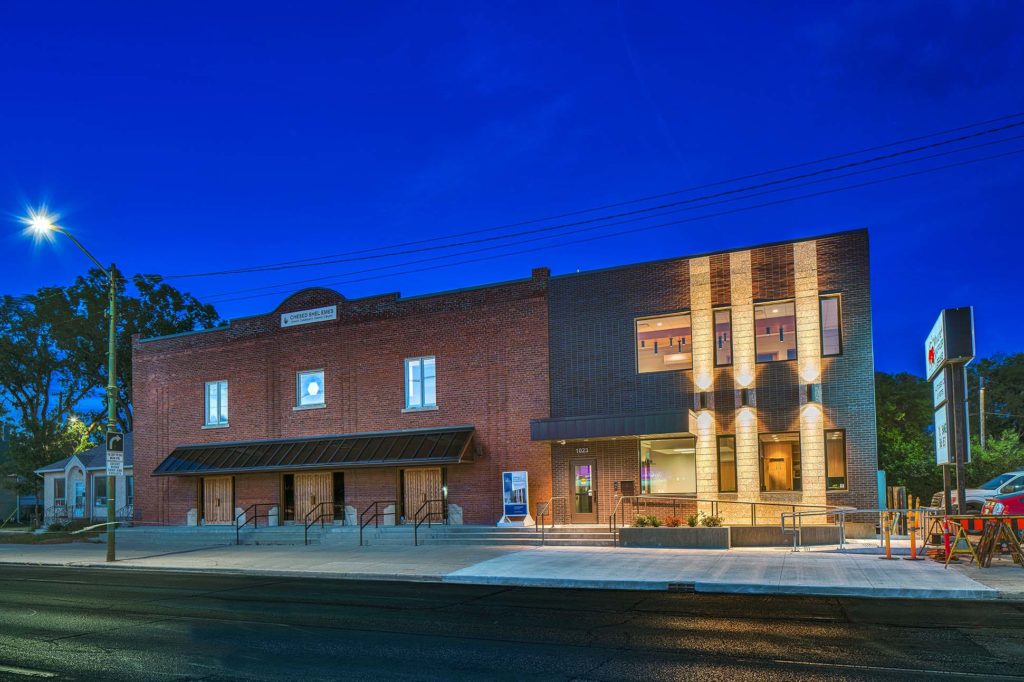
We’re delighted to share a major milestone in our Capital Campaign, “Building on our Tradition.” Launched in November 2018, this campaign aimed to replace our outdated facility with a modern space tailored to our unique needs. Our new building is designed with ritual at its core, featuring ample preparation space, Shomer space, and storage, creating a warm and welcoming environment for our community during times of need.
We’re grateful to the nearly 1,000 generous donors who contributed over $4 million towards our new facility. A $750,000 mortgage will be retired in November 2025, completing this monumental project in just seven years.
We’re also thrilled to announce that our Chesed Shel Emes Endowment Fund has grown tenfold, from $15,000 to $150,000, thanks to you, the Jewish Foundation of Manitoba’s FundMatch program, and Million Dollar Match initiative in 2024. Our fund helps ensure that everyone can have a dignified Jewish funeral regardless of financial need.
As we look to the future, our goal remains to ensure the Chevra Kadisha continues to serve our community for generations to come. Our focus now shifts to replenishing our savings account and growing our JFM Endowment fund.
We’re deeply grateful for your support over the past several years.
It’s our privilege to serve our community with care and compassion.
With sincere appreciation,
Campaign cabinet: Hillel Kravetsky, Gerry Pritchard, Stuart Pudavick,
Jack Solomon, and Rena Boroditsky
Murray S. Greenfield, President
Local News
Winnipeg Beach Synagogue about to celebrate 75th anniversary
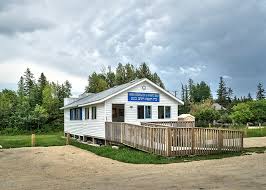
By BERNIE BELLAN (July 13) In 1950 a group of cottage owners at Winnipeg Beach took it upon themselves to relocate a one-room schoolhouse that was in the Beausejour area to Winnipeg Beach where it became the beach synagogue at the corner of Hazel and Grove.
There it stayed until 1998 when it was moved to its current location at Camp Massad.
On August 2nd members of the synagogue will be holding a 75th anniversary celebration.
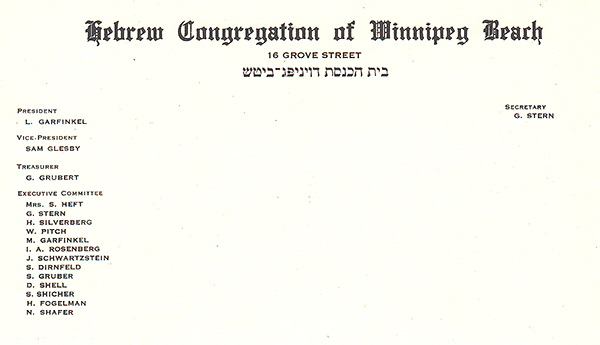
As part of the celebration anyone who is a descendant or relative of any of the original members of the first executive committee (as seen in the photo here) is invited to attend the synagogue that morning.
If you are a relative please contact Abe Borzykowski at wpgbeachshule@shaw.ca or aborzykowski@shaw.ca to let Abe know you might be attending or for more information about the 75th anniversary celebration.
We will soon be publishing a story about the history of the beach synagogue, which is something I’ve been writing about for over 25 years.
Local News
Vickar Family cuts ribbon on new Tova Vickar and Family Childcare Centre
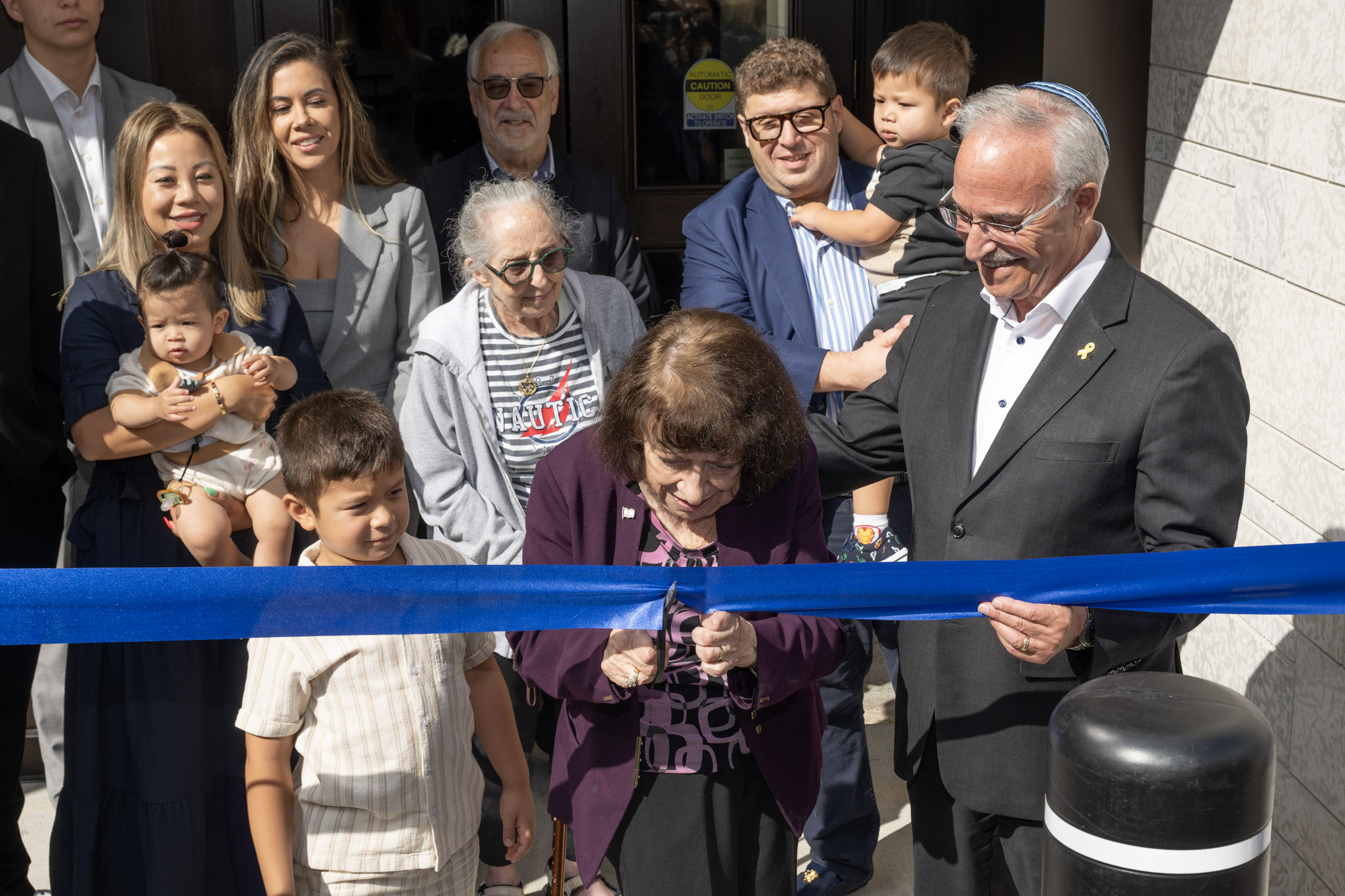
By MYRON LOVE In the words of Larry Vickar, the Shaarey Zedek’s successful Dor V’ Dor Campaign “is not only a renewal of the synagogue but truly a renewal movement of Jewish life in our community.”An integral part of that renewal movement was the creation of a daycare centre within the expanded synagogue. On Monday, June 23, Larry and Tova Vickar cut the ribbon, thereby officially opening the Tova Vickar and Family Childcare Centre in the presence of 100 of their family members, friends and other supporters of the project.
The short program preceding the morning ribbon-cutting began with a continental breakfast followed by a welcome by both Fanny Levy, Shaarey Zedek’s Board President, and Executive Director Dr. Rena Secter Elbaze. In Elbaze’s remarks, she noted that Larry and Tova wanted their family (including son Stephen and family, who flew in from Florida) and friends at the event to celebrate the opening of the Tova Vickar and Family Childcare Centre, “not because of the accolades, but because, as Larry put it, he hopes that their investment in the congregation will inspire others to do the same.”
“When Larry and I spoke about what this gift meant to him and the message he wanted people to take away,” she continued, “I couldn’t help but connect it to the teachings of Reb Zalman Schachter-Shalomi whose book – Age-ing to Sage-ing – changes the whole way we look at the concept of ageing and basing it on our ancestral teachings.”
She explained that his concept of “Sage-ing” is based on three key ideas – Discover your meaning and purpose; accept our mortality and think about the legacy you want to leave.
“Larry spoke about these exact concepts when we met,” she said.
Elbaze also noted the presence of Shaarey Zedek’s newly-arrived senior Rabbi Carnie Rose, former Rabbi Alan Green, and area MLAs Mike Moroz and Carla Compton.
Larry Vickar expressed his great appreciation for all those in attendance. “Tova and I are deeply moved to stand here with you today for this important milestone in our community”, he said. “We are grateful to be surrounded by all of you, the people we care about, our family and friends… you who have touched our lives and played some part in our journey.”
